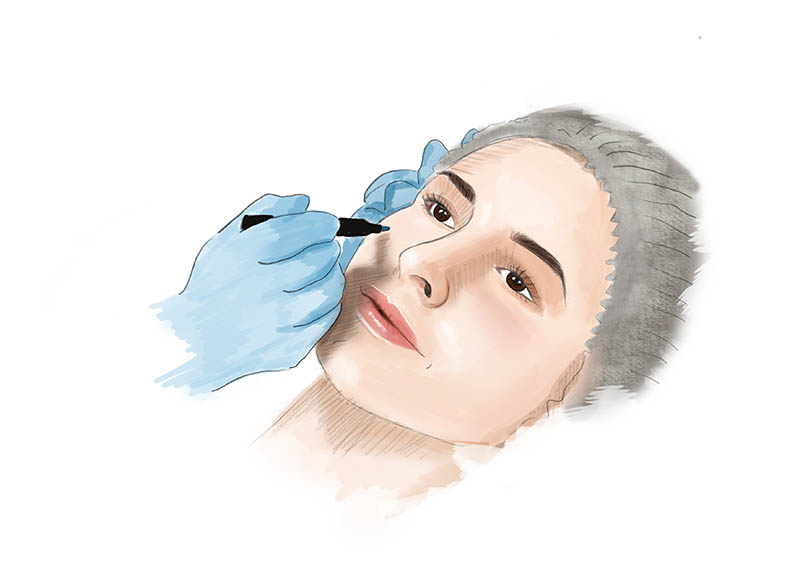
What is Facelift Surgery?
A facelift, or rhytidectomy, is a surgical procedure that improves visible signs of aging in the face and neck, such as:
- Relaxation of the skin of the face causing sagging
- Deepening of the fold lines between the nose and corner of the mouth
- Fat that has fallen or has disappeared
- Jowls
- Loose skin and excess fat of the neck that can appear as a double chin or "turkey neck"
The loss of youthful contours in the face can be due to variety of factors, including thinning of the skin, loss of facial fat, gravity, sun damage, smoking, as well as heredity and stress.
Other procedures that might be performed in conjunction with a facelift are brow lift and eyelid surgery to rejuvenate aging eyes. Fat transfer or fillers may be suggested to replace the lost fatty volume. Skin treatments such as IPL, dermabrasion, peels or laser may be offered to improve the quality and texture of the skin.
What facelift surgery can't do
As a restorative surgery, a facelift does not change your fundamental appearance and cannot stop the aging process.
A facelift can only be performed surgically; nonsurgical rejuvenation treatments cannot achieve the same results, but may help delay the time at which a facelift becomes appropriate and complement the results of surgery.
Some nonsurgical treatments, such as stem cell facelifts, are of unproven benefit.
Facelift Surgery cost
Facelift costs can vary widely. The average cost of a facelift is AU$6,000.
Most health insurance does not cover facelift surgery or its complications, but many plastic surgeons offer patient financing plans, so be sure to ask. Facelift costs may include:
- Surgeon's fee
- Hospital or surgical facility costs
- Anesthesia fees
- Prescriptions for medication
- Post-surgery garments
When choosing a board-certified plastic surgeon in your area for facelift surgery, remember that the surgeon's experience and your comfort with him or her are just as important as the final cost of the surgery.
Facelift Surgery Candidates
In general, good candidates for a facelift include:
- Healthy individuals who do not have medical conditions that impair healing
- Individuals with a positive outlook and realistic expectations
Facelift Surgery Recovery
Following completion of a facelift, a bandage might be placed around your face to minimize swelling and bruising. Small tubes may be present to draw off any excess blood or fluid.
You will be given specific instructions on how to care for the surgical site and drains, medications to apply or take orally, specific concerns to look for at the surgical site or in your general health and when to follow up with your plastic surgeon.
Be sure to ask your plastic surgeon specific questions about what you can expect during your recovery period.
- Where will I be taken after my surgery is complete?
- What medication will I be given or prescribed after surgery?
- Will I have dressings/bandages after surgery?
- When will they be removed?
- When will the stitches be removed?
- When can I wash my face and wear make-up?
- When can I resume normal activity and exercise?
- When can I color my hair or get a haircut?
Facelift Surgery Result
While most people are presentable to the public within 10-14 days, it will take 2-3 months for the face to feel "back to normal" in terms of texture, sensibility and loss of tightness.
Continuing daily sun protection and a healthy lifestyle will help extend the results of your facelift.
As swelling and bruising subside, the visible improvements of a facelift appear. Your final result should not only provide a more youthful and rested appearance, but also help you feel more confident about yourself.
Although good results are expected, there can be no guarantee. In some situations, it may not be possible to achieve optimal results with a single surgical procedure and another surgery may be necessary.
Follow your physician's instructions to ensure the success of your surgery.
